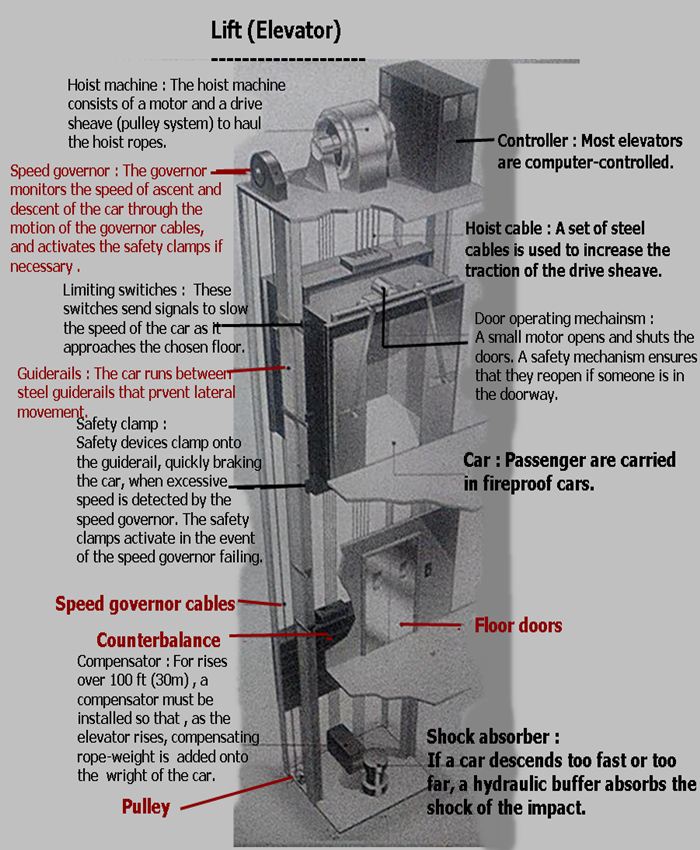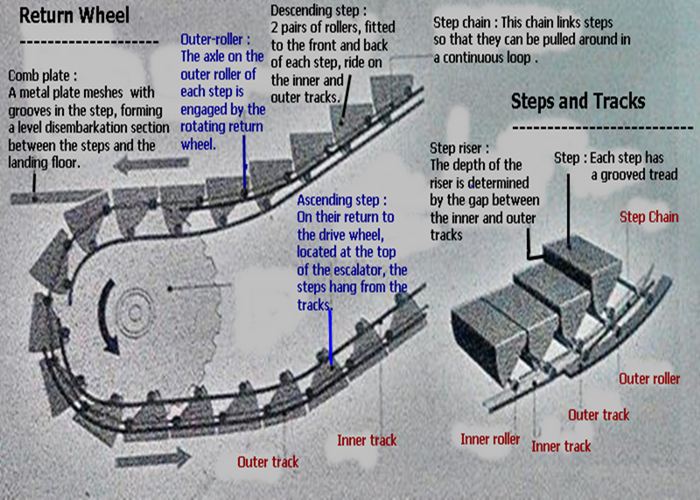Public Utilities Services
Elevators and Escalators
====================
Lift (Elevator) :
----------------------
The first passenger elevator was installed in the Haughwout Department Store in
New York in 1857. It was designed by Elisha G. Otis and was driven by steam power.
Improvements in elevator technology gave architects the opportunity to design
increasingly tall buildings, contributing to the rise of the skyscraper. Escalators, also
developed during the late 19th century, allowed better access to airports,
subway stations, and department stores.
Over 2 million elevators carry people and freight up and down buildings worldwide ,
a fifth of them are located in North America alone where 350 million people ride on
elevators each day.
Nearly all elevators derive power from 2 kinds of electric traction. Gearless traction
elevators can reach speeds of up to 2,000 ft (600 m ) per minute and are generally
used in offices of more than 10 stories and in apartment buildings of more than 30 stories.
Geared traction elevators, equipped with a reduction gear that slows the sheave, or pulley,
move at a quarter that speed. Elevators that are hydraulically driven travel at about 100 ft
(30 m) per minute and are used as industrial freight elevators or in low-rise office or
apartment buildings of 6 stories or less.


Escalator :
----------------
An escalator is a people conveyor in which drive chains , powered by a high-speed electric motor ,
carry a series o f metal steps around in an inclined loop. The direction in which these staircases
move can be reversed to carry people upward or downward. The first escalators were installed in
New York City and Paris, France, in 1900. They resembled what we would now called a travelator,
a smooth incline with no folding steps. Handrails were added later, and the modern escalator
appeared in 1921. Escalators typically run at a speed of 150 ft (45 m) per minute and can transport
as many as 10,000 people an hour.
How an escalator works ?
------------------------------------
Escalators have 3 major structural components :
1) the landings,
2) the truss, and
3) the tracks.
The landings are flush with the floor at the top and bottom of an escalator. Hinged plates allow access
to the machinery that operates the escalator, such as the drive machinery under the top landing .
Comb plates mesh with the grooves on the tread of each step. The truss is the structure that bridges
the gap between the floors and holds the tracks. The tracks guide the step chain as it moves in its loop.
Hidden rollers under each step run on these tracks, which are positioned so that the steps fold out as
they travel up or down the front of the escalator, and fold flat when they travel underneath it.